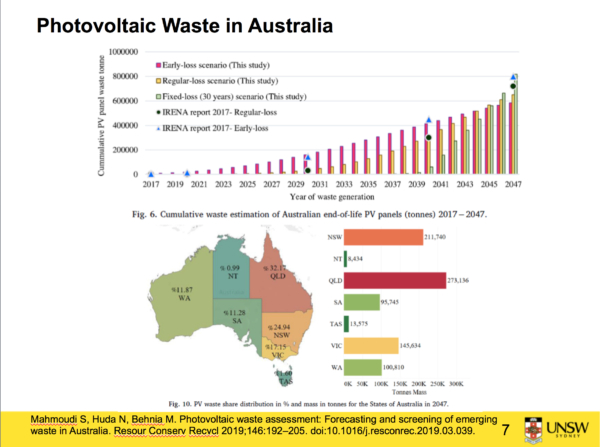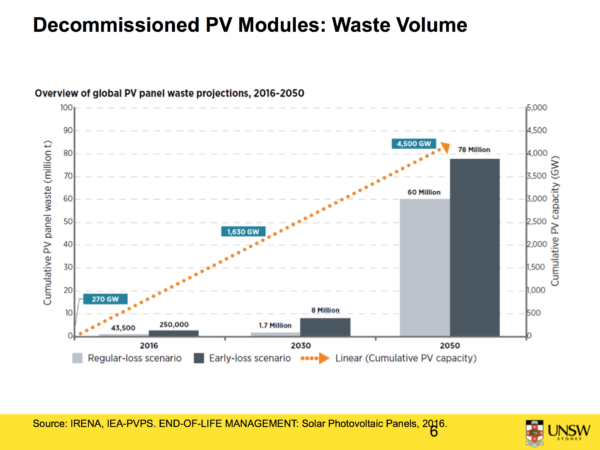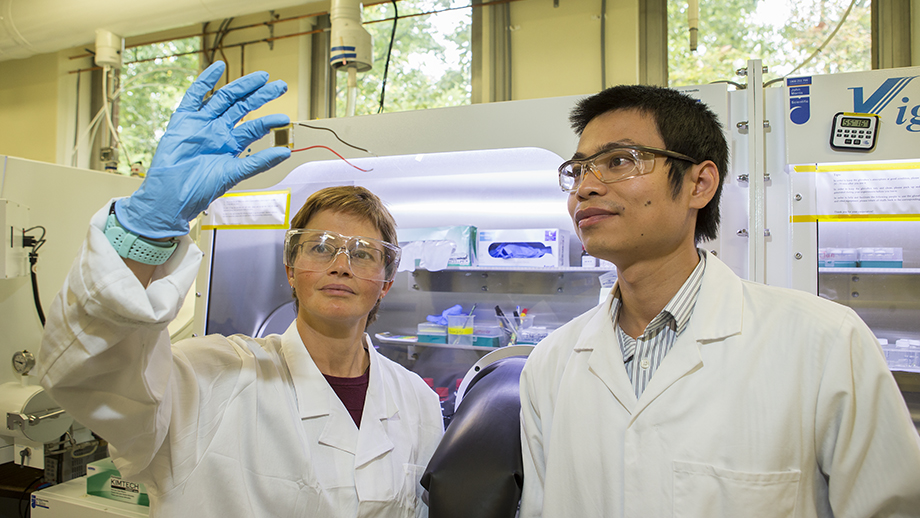Announced in December 2019, the $15.14 million of Australian Renewable Energy Agency (ARENA) funding allocated to address solar PV panel efficiency, lowering the cost of PV and resolving PV end-of-life issues, was on Friday awarded to research teams from six Australian universities.
This funding round pre-dates the resetting of mandates for ARENA from 2022, to not only support research into renewable energy technologies, but to bolster fossil fuel technologies with funds directed towards “low-emission” technologies such as carbon capture and storage (CCS).
Although Prime Minister Scott Morrison has asserted that, “Solar panels … are now clearly commercially viable and have graduated from the need for government subsidies,” this particular funding aims to advance solar technology “as today’s widely deployed cells reach their efficiency limits”, ARENA explained.
Australian researchers have long been at the forefront of solar breakthroughs, and innovation needs support to flourish. The dividends of supporting such R&D are in increased performance for reduced capital expenditure, a mantra of energy generation designed to deliver consumers and industry the biggest bang for their solar buck.
The University of New South Wales (UNSW) received the lion’s share of this ARENA funding pool, with more than $7 million awarded to groups including Scientia Professor Martin Green’s ‘Reduced solar module temperature’ project.
Green’s development of cost-effective approaches to reducing the efficiency-eroding rise in temperature that PV modules undergo when operating under the, ah… sun, aims to achieve more than 5 degrees celsius reduction in the nominal module-operating temperature of modules.
A five-degree reduction would be “significant”, Green told pv magazine last year, “because it will give a 40% increase in the time it takes for solar cell performance to degrade by 20%, and it will also improve the power output of the modules while they are operating.” He calculated this would deliver a total increase in energy production from solar PV modules of around 50% over their enhanced lifetime.
That’s an outcome worth toiling for. Little wonder that Green received $1,767,730, the largest allocation from the round, for his research which involves a number of module modifications that not only substantially reduce the operating temperatures of modules in the field, but which can be rapidly and cost-effectively incorporated into current solar manufacturing processes.
End-of-life planning delivers multiple benefits
Green’s long-time colleague, Professor CheeMun Chong, of UNSW’s School of Photovoltaic and Renewable Energy Engineering, received the second-largest grant, of $1,560,000, to develop economically viable technologies that recycle solar modules and enable reuse of those materials in the manufacture of ‘new’ PV modules.
This is the first time ARENA has sought applications for addressing the end-of-life PV waste stream, and it’s easy to see why: although the vast majority of solar panels installed are still generating, photovoltaic waste in Australia alone is projected to reach 800,000 tonnes by 2047.

Last year the International Renewable Energy Agency forecast that globally almost 80 million tonnes of end-of-life PV modules would enter the waste stream by 2050, and the race is on to effectively separate panel components and profitably redirect those materials back into production.Chong told pv magazine that if we could recycle the glass, aluminium, silver, copper and silicon from that volume, “We’re talking US$15 billion in material recovery alone.”

Those materials would then translate into 2 billion new solar panels, or some 630 GW of generation, not to mention the creation of a new industry employing thousands of people, and the environmental benefits of keeping end-of-life module materials out of landfill and in the circular economy.
PV modules now installed have an expected lifespan of between 15 to 35 years, but many are be expected to be replaced by higher performing technology before before they reach the end of their operational life.
Cost has until now been the barrier to developing a PV recycling industry, but a research paper published by Chong’s team — A techno-economic review of silicon photovoltaic module recycling — last year identified that “under certain circumstances, recycling solar panels can be profitable, which is very exciting,” the Professor said.
The university PV-recycling challenge
Another UNSW project led by Australian Research Council Future Fellow Associate Professor Yansong Shen, in the School of Chemical Engineering, is also focused on an eco-friendly, low-cost, efficient recycling technology for silicon-based PV. Shen’s methodology, inspired by metallurgy engineering, attracted $1,360,000 in ARENA funds.
A Swinburne University team, headed by Professor M Akhbar Rhamdani at the School of Engineering will apply a grant of $404,000 to advancing an innovative, robust recycling process that enables a greater diversity of waste materials from solar panels to be processed; and recover the high value silver in modules to improve the economics of recycling.
“A key part of the funding round was finding a solution to the end-of-life of solar panels,” said ARENA CEO Darren Miller, who added, “We’re excited to see some interesting new research into this area.”
Squeezing greater performance from silicon
A total of seven projects, including Green’s promising temperature-reduction measures, were awarded grants in the category “advanced silicon”, which aims to demonstrate “improvements to the overall cost-effectiveness of silicon-based panels already in mass market production, and their production processes”, ARENA explained in its announcement.
“Tandem silicon” projects intended to increase the cost-effectiveness of silicon-based solar PV through the use of tandem materials, were awarded more than $3,700,000; and the “new materials” category, which has the potential to contribute to breakthrough cost efficiencies in solar production, scooped more than $2 million, with the biggest slice going to the University of Melbourne’s work in using ‘Singlet Fission’ to enhance silicon solar cells.
ARENA received more than 50 applications for this multi-dimensional round, with a total project value of $150 million plus.
“We’re very pleased with the level of interest which is reflected in the great variety of projects across the priority areas, particularly in the advanced silicon field where Australia leads the world,” said Miller.
The Agency estimates that more than 50 new jobs will be created by the 16 funded projects over their two-year period to delivery of results and sharing of outcomes.
According to BloombergNEF’s most recent New Energy Outlook, the cost of PV has fallen 85% since 2010, and its analysts predict that a further 109 GW of solar PV will be installed in Australia by 2050.
Efficiency gains driven by Australian-based research projects will continue to contribute to cost reductions in that renewable energy in the coming decades, and to the viability of technologies still in development, such as hydrogen production.
This content is protected by copyright and may not be reused. If you want to cooperate with us and would like to reuse some of our content, please contact: editors@pv-magazine.com.









By submitting this form you agree to pv magazine using your data for the purposes of publishing your comment.
Your personal data will only be disclosed or otherwise transmitted to third parties for the purposes of spam filtering or if this is necessary for technical maintenance of the website. Any other transfer to third parties will not take place unless this is justified on the basis of applicable data protection regulations or if pv magazine is legally obliged to do so.
You may revoke this consent at any time with effect for the future, in which case your personal data will be deleted immediately. Otherwise, your data will be deleted if pv magazine has processed your request or the purpose of data storage is fulfilled.
Further information on data privacy can be found in our Data Protection Policy.